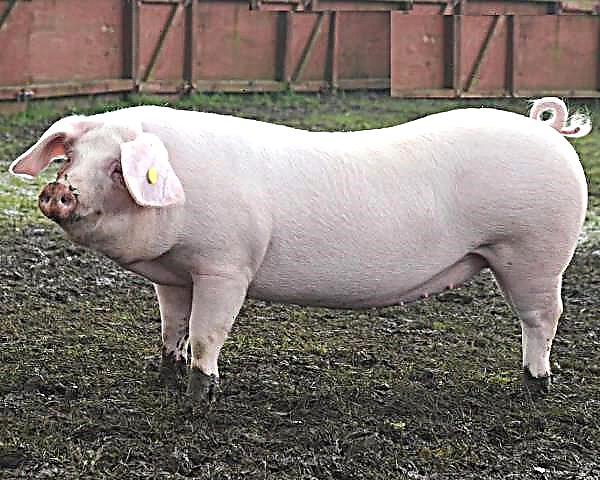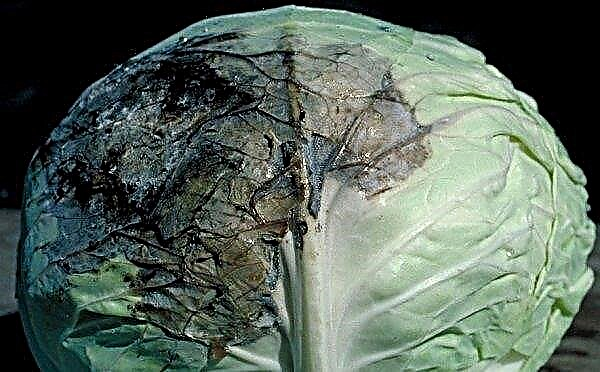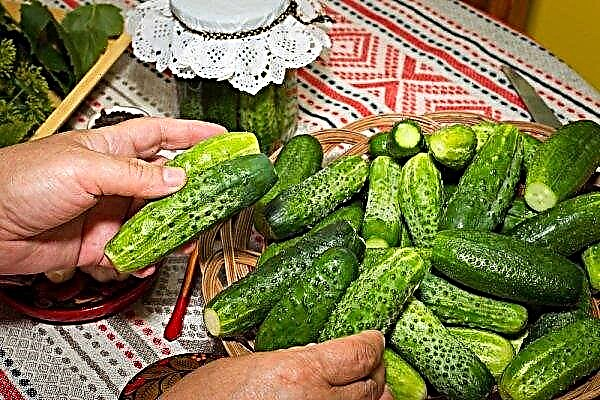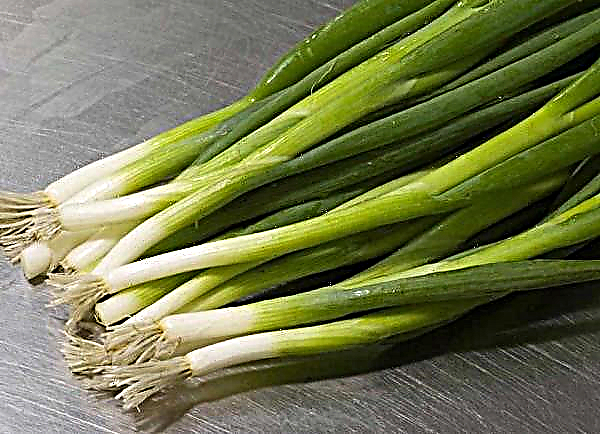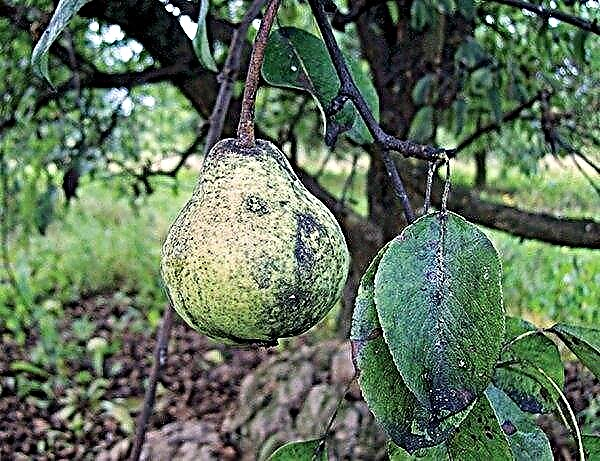High productivity, versatility, beautiful appearance and unpretentiousness - these are just a short list of reasons why Foxy Chick, or the Hungarian giant, is among the ten most common breeds of chickens. We will get to know more closely these birds that are found in many households.
Origin of breed
The birthplace of the breed is Hungary, where the genes of chickens of the English breed Orlington were grafted to local chickens. Thanks to their homeland, the animals acquired the nickname Hungarian giant, and after the breed spread on the European continent, they received the name Foxy Chick (in translation from English - “fox chicken”).
Important! Since Foxy Chick is a cross, full reproduction within the breed is impossible.
Description and characteristic
One of the breed's calling cards is a bright red color, ranging from red-fire to reddish-brown. The body is squat and dimensional.
Appearance
The appearance features of these chickens are as follows:
| Head | small |
| Crest | leafy |
| Beak | medium sized |
| Neck | medium sized, wide |
| Chest | wide |
| Stomach | wide |
| Wings | medium size |
| Tail | short, at an angle of 45 degrees |
| Paws | powerful, medium length |
| Plumage | thick |
Character
The chickens of this breed simply have a huge amount of energy, so by nature they are birds very active and lively interested in the world around them, they like to poke around in the ground in search of food. In this regard, birds spend a lot of time in the fresh air or in a special enclosure for walking, and the chicken coop always comes alive when people approach.
Did you know? Foxy Chick - wonderful stepmothers: they can hatch both their eggs and eggs of other breeds.
Roosters are aggressive and often come into fights, sometimes fights arise between hens. Nevertheless, among their chickens, males maintain order.
Advantages and disadvantages
Foxy Chick breeding has many advantages:
- 100% survival rate among both young and adult livestock;
- quick weight gain in chickens;
- good adaptation to the weather, regardless of the climatic zone;
- the presence of a significantly developed instinct of incubation;
- unpretentious, and therefore keeping and feeding chickens does not require additional skills and / or equipment;
- high benefits due to the low cost of maintenance.
 With all the advantages, chickens of this breed also have some disadvantages:
With all the advantages, chickens of this breed also have some disadvantages:- after the first year of life, productivity decreases;
- the hens of this breed are characterized by a manifestation of aggression.
Foxy Chick Breeding at Home
Hungarian - the breed is extremely unpretentious and does not require special treatment. Nevertheless, she still needs basic amenities.
Suitable conditions
Consider which chicken house is most preferred for hens.
Chicken coop requirements
The chicken coop should be spacious, as the hens are very energetic, the area is calculated according to the formula 3-4 chicken per 1 square. m. The whole structure must be closed, because the chickens fly well. Perches with nests and stems are located at a height of 80 centimeters from the floor and have 4 centimeters in diameter. The floor is covered with insulation, which is allowed to use hay, straw, peat, dry foliage and sawdust. In the chicken coop, a bath with ash and sand is equipped in which chickens clean their plumage. The chicken coop should not have moisture and dampness to prevent the development of mold and harmful microorganisms.
In the chicken coop, a bath with ash and sand is equipped in which chickens clean their plumage. The chicken coop should not have moisture and dampness to prevent the development of mold and harmful microorganisms.
Important! The use of polystyrene is strictly contraindicated - chickens will habitually peck it, dooming themselves to intoxication and clogged goiter.
Feeding troughs and drinking bowls
Drinking bowls and feeders are located inside the chicken coop. They must be closed to prevent the entry of microbes and insects into them, which will spoil food and / or parasitize chickens.
Walking yard
On the south side of the chicken coop should be a courtyard on which hens can walk. The courtyard is connected to the chicken coop with the help of manholes open all year round. In winter, these manholes are covered with wood to protect chickens from the cold. Mindful of the ability of Foxy Chick to fly, the courtyard is equipped with a fence up to 1 meter high.
Important! Hens tolerate cold well, so in the winter it is worth refraining from walking only if the frost is stronger than 10 degrees.
Adult Feeding
Almost everything goes to Foxy Chick feed. The basis of the diet should be many crops of cereal and leguminous origin - peas, barley, corn and wheat. Mixers and compound feeds with pieces of shredded herbs and foliage — clover, alfalfa and nettle — go well for food. Fermented milk products, meat and bone meal, fish oil are suitable as mixtures. A mixture of crushed shell rock and egg shells is also added to the food - they will help the chicken chop food. It costs 4 times to feed animals in warm season and 5 times in winter.
Shedding and egg laying break
Like other chickens, Hungarian giants have a molt season. It occurs in the fall and lasts from 6 to 8 weeks. During this period, hens cease to sweep. Shedding can be accelerated by eliminating grain from the diet and reducing the amount of sunlight. The egg production of these hens is year-round, but from the second year they are significantly reduced, and therefore the year-old hens are slaughtered.
Features of growing chickens
Chickens have good health, and their survival rate reaches 100%. Caring for them is slightly different from caring for adults.
Reproduction of offspring
Since this breed is cross-country, at the birth of subsequent generations in animals only certain signs of those breeds that were used to obtain the livestock are manifested. In this regard, it is recommended not to try to reproduce the breed on their own, but to contact farms and companies specializing in breeding Hungarian giants.
Feeding
For Foxy Chick chickens, traditional food for meat and egg breeds is not suitable, therefore, broiler feed is used and constant access to water is provided. It is also recommended to give the chicks a decoction, which includes a boiled chicken egg and ground grain. A couple of weeks after birth, meat and bone meal and lime additives are added to the food, and after a month and a half, the chicks are transferred to normal nutrition.
Did you know? Chickens are very well oriented in time and are able to remember more than 100 faces of people.
Nevertheless, the grinding should be finer than for adults. It is especially worthwhile to monitor the cleanliness of the drinking bowl and the constant change of water.
Baby Care
The basis of chick care is nutrition and food control. The first two months of life, the water should not be colder than 40 degrees, and the food should not contain grain, since chickens are unable to digest it, and they will have a stomach. Since males have a well-developed maternal instinct, no additional control of the chicks is required.
Possible diseases
Possessing outstanding immunity, Hungarian giants practically do not get sick, and there are no diseases caused by the characteristics of the breed. The only threat to the health of the chickens is the ability to pick up a parasite or get an intestinal infection. To prevent such cases, prophylactic vaccination and examination of animals for the presence of parasites are used.
Foxy Chick is a very productive breed of chickens. They do not require special conditions, are unpretentious in food and get along well in any climate. All this allowed the Hungarian Velicans to take the place of one of the most popular breeds that can be found in many European farms.

